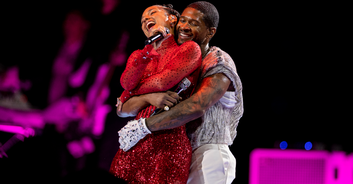If you're staying up to see the new year in, chances are you'll be hearing the song 'Auld Lang Syne' as the clock strikes midnight - but what does it actually mean?
The song is something of a New Year classic, but - if we're honest - how many of us actually know any of the lyrics apart from the one about "old acquaintances" being "forgot"?
Well, we've all had ample time to learn it as the track has actually been around since the 18th century, originating in Scotland before being played to welcome in the New Year in many countries around the world.
Here's everything you need to know about 'Auld Lang Syne'.

So let's start with what 'Auld Lang Syne' actually means. The phrase, roughly translated, means "old long since" or "for old times' sake" in Scots.
Professor Murray Pittock, a literary historian with the Centre for Robert Burns Studies at the University of Glasgow, told CBS News: "'Auld Lang Syne' can be literally translated as 'Old Long Since,' but the literal English does not give a sense of what it means to a user of Scots, where it refers to a shared past underpinning the current relationships of a family, community or professional/social association.
"As such it is more evocative, nostalgic, and communally unifying than any simple English equivalent."
According to Scotland's national tourist board, today's version of the song comes from works by the Scottish poet Robert Burns, who traveled the country collecting old Scots songs and poetry in order to preserve the language.
He wrote down the song after hearing an old man singing it, and its origins can be traced back to 'Auld Kyndness Forgot', which was preserved in a manuscript from 1568 according to Pittock.
Burns is believed to have altered the original lyrics,with the version we all know today having been published in 1799, three years after his death.
The song is played every New Year in the UK and US, with its popularity in the States beginning in 1929 when bandleader Guy Lombardo and his Royal Canadian Big Band played it on a New Year's Eve broadcast, revealing in 1965 that he'd chosen it because he came from a part of western Ontario home to a large Scottish population, where it was tradition for bands to end every dance with 'Auld Lang Syne.'
The tradition of singing it for the New Year stems from Scotland where Hogmanay would be marked by the singing of 'Auld Lang Syne' while revelers would cross their arms and join their hands in a circle.
Now you know the history of it, you've got time to learn the lyrics too, which are below.
What are the lyrics to 'Auld Lang Syne'?
Should auld acquaintance be forgot,
and never brought to mind?
Should auld acquaintance be forgot,
and auld lang syne?
For auld lang syne, my jo,
for auld lang syne,
we’ll tak’ a cup o’ kindness yet,
for auld lang syne.
And surely ye’ll be your pint-stoup!
and surely I’ll be mine!
And we’ll tak’ a cup o’ kindness yet,
for auld lang syne.
Chorus
We twa hae run about the braes,
and pou’d the gowans fine;
But we’ve wander’d mony a weary fit,
sin’ auld lang syne.
We twa hae paidl’d in the burn,
frae morning sun till dine;
But seas between us braid hae roar’d
sin’ auld lang syne.
And there’s a hand,
my trusty fiere!
and gie’s a hand o’ thine!
And we’ll tak’ a right gude-willie waught,
for auld lang syne.












